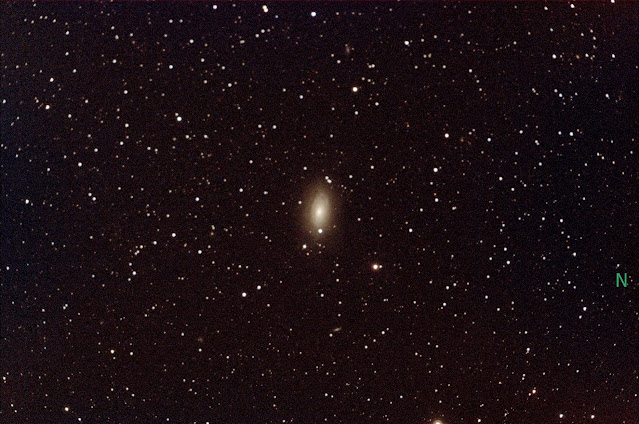Messier Marathon by Remote Telescopes (M60-M69)
梅西耶 馬拉松 之 遠端天文台 版本
Messier marathon is an attempt, usually organized by amateur astronomers, to find as many Messier objects as possible during one night. The Messier catalogue was compiled by French astronomer Charles Messier during the late 18th century and consists of 110 relatively bright deep-sky objects (galaxies, nebulae, and star clusters).
梅西耶 馬拉松 ( Messier Marathon ) 是在一夜內尋找到儘可能多,或儘可能完成全部110個梅西耶天體的活動。
https://zh.wikipedia.org/zh-tw/%E6%A2%85%E8%A5%BF%E7%88%BE%E9%A6%AC%E6%8B%89%E6%9D%BE
梅西耶目錄 是法國天文學家梅西耶在18世紀編輯的,總共有110個相對較明亮的深空天體(星系、星雲和星團)。
https://zh.wikipedia.org/wiki/%E6%A2%85%E8%A5%BF%E8%80%B6%E5%A4%A9%E4%BD%93%E5%88%97%E8%A1%A8
https://zh.wikipedia.org/wiki/%E6%A2%85%E8%A5%BF%E8%80%B6%E5%A4%A9%E9%AB%94
網路上的 遠端天文台,裡面設置 天文望遠鏡, 可以用網路遠端控制,做 天文攝影。
這種方案已經發展多年了,各種功能與介面也越來越純熟了。
遙控望遠鏡(遠端天文台) ( 草山星空 )
https://astrotracer.blogspot.com/2016/07/itelescope.html
我個人因為工作忙碌勞累,不容易參加實體的梅西耶馬拉松,於是就興起一個興趣,想用遠端天文台來拍攝梅西耶深空天體,希望可以在一年,或三年內完成全部110個梅西耶天體。
想稱之為:
梅西耶 馬拉松 之 遠端天文台 版本
預計使用 iTelescope 與 Telescope Live
** CCD 的 LRBG 或 HSO 原始影像 使用 DDS (2020年) 或 CCDStack 疊合 (2023年)
Messier Marathon by Remote Telescopes
Messier Marathon by Remote Telescopes (M1-M9)
Messier Marathon by Remote Telescopes (M10-M19)
Messier Marathon by Remote Telescopes (M20-M29)
Messier Marathon by Remote Telescopes (M30-M39)
Messier Marathon by Remote Telescopes (M40-M49)
Messier Marathon by Remote Telescopes (M50-M59)
Messier Marathon by Remote Telescopes (M60-M69)
Messier Marathon by Remote Telescopes (M70-M79)
Messier Marathon by Remote Telescopes (M80-M89)
Messier Marathon by Remote Telescopes (M90-M99)
Messier Marathon by Remote Telescopes (M100-M110)
Extra:
NGC Omega Centauri, and other Objects ( Omega Centauri NGC )
IC, Barnard, Sh2, Caldwell etc
Astrophotography by Web Remote Telescopes 網路天文攝影 初體驗 (再體驗) + 觀測紀錄
M63 ( Sunflower Galaxy ) ( 向日葵星系)
https://en.wikipedia.org/wiki/Messier_63
2023-03-27 iTelescope T68 color
color 240 sec 彩色 曝光 4分鐘 影像
color 240 sec x 2 彩色 曝光 4分鐘 2張影像疊圖
裁切
M64 ( Black Eye Galaxy ) ( 黑眼星系)
https://en.wikipedia.org/wiki/Black_Eye_Galaxy
The Black Eye Galaxy (also called Sleeping Beauty Galaxy or Evil Eye Galaxy and designated Messier 64, M64, or NGC 4826) is a relatively isolated[7] spiral galaxy 17 million light-years away in the mildly northern constellation of Coma Berenices. It was discovered by Edward Pigott in March 1779, and independently by Johann Elert Bode in April of the same year, as well as by Charles Messier the next year. A dark band of absorbing dust partially in front of its bright nucleus gave rise to its nicknames of the "Black Eye", "Evil Eye", or "Sleeping Beauty" galaxy.[11][12] M64 is well known among amateur astronomers due to its form in small telescopes and visibility across inhabited latitudes.
https://zh.wikipedia.org/zh-tw/%E9%BB%91%E7%9C%BC%E6%98%9F%E7%B3%BB
黑眼星系(也稱為睡美人星系、梅西耶64、M64或NGC 4826)由英國天文學家愛德華·皮戈特(Edward Pigott)於1779年3月發現,亦在同年4月被德國天文學家約翰·艾勒特·博帝(Johann Elert Bode)獨立發現,此外,查爾斯·梅西耶也在1780年發現它。M64有一條引人入勝的壯觀黑暗塵帶,橫亙在明亮的星系核心之前,因而被稱為"黑眼星系"或"魔眼星系"。M64是位於后髮座的螺旋星系,因為在小望遠鏡下的景觀使他在業餘天文學界中非常出名。
2023-05-08 iTelescope T11 RGB
RGB 180 sec 三色 曝光各 3分鐘 影像
T11

















沒有留言:
張貼留言